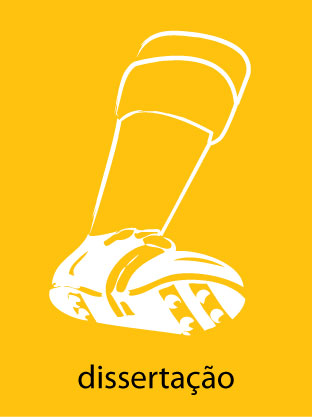Esta dissertação analisa a cobertura da Placar, mais antiga e tradicional revista esportiva em circulação no país, sobre o futebol de mulheres, entre 1992 e 2019, anos que envolvem as oito edições existentes da Copa do Mundo Feminina. Nosso problema de pesquisa parte da seguinte indagação: quais mudanças nos critérios de noticiabilidade da revista Placar relacionados ao futebol de mulheres ocorreram entre a primeira e a última edição da Copa do Mundo Feminina, ocorrida em 2019? Neste recorte, observamos como os critérios de noticiabilidade nas publicações da revista modificam-se ao passar do tempo e reagem às mudanças sociais. Partimos do pressuposto de que as notícias não são simplesmente reflexos da realidade, mas quem as produz também ajuda a construir socialmente essa realidade. Observamos ainda se as transformações por que passam o jornalismo com a web e, mais especificamente, com a Web 2.0, que, por sua vez, possibilitou o envolvimento de uma audiência potente, alteraram os critérios de noticiabilidade relacionados ao futebol de mulheres na Placar. A partir desse princípio, nosso objetivo principal foi investigar o processo de mudança nos critérios de noticiabilidade deste periódico, observando uma nova configuração social na qual a mulher, cada vez mais, passa a ocupar espaços que antes eram predominantemente masculinos – caso eminente do futebol. Para entender o contexto, partimos das amplitudes sociais do futebol na sociedade brasileira, mergulhando no histórico do futebol de mulheres, e passando com olhar crítico pelo desenvolvimento do jornalismo esportivo no Brasil, com enfoque na Placar. Nossa hipótese é que os valores-notícia acompanham as transformações sociais, a partir de jornalistas mais conscientes do papel que desempenham na sociedade ao construir notícias que podem contribuir para reforçar ou minimizar assimetrias de gênero no futebol. No estudo foi utilizado o método de pesquisa bibliográfica, de cunho teórico; a Análise de Conteúdo defendida por Bardin (1977) e Herscovitz (2008), que se caracteriza por quantitativa e qualitativa; e técnica de coleta de dados por meio de recolha de reportagens publicadas na revista Placar, além de entrevistas com 11 jornalistas que fizeram a revista durante o recorte temporal da nossa análise, dentre os quais, destacamos Juca Kfouri, Sérgio Xavier Filho, Celso Unzelte e Ricardo Corrêa. Esta dissertação é uma contribuição teórica à Sociologia do Jornalismo, à Ciência da Comunicação e aos estudos acerca do futebol de mulheres no Brasil.
Palavras-chave: Jornalismo. Noticiabilidade. Futebol de Mulheres. Audiência Potente. Placar.


